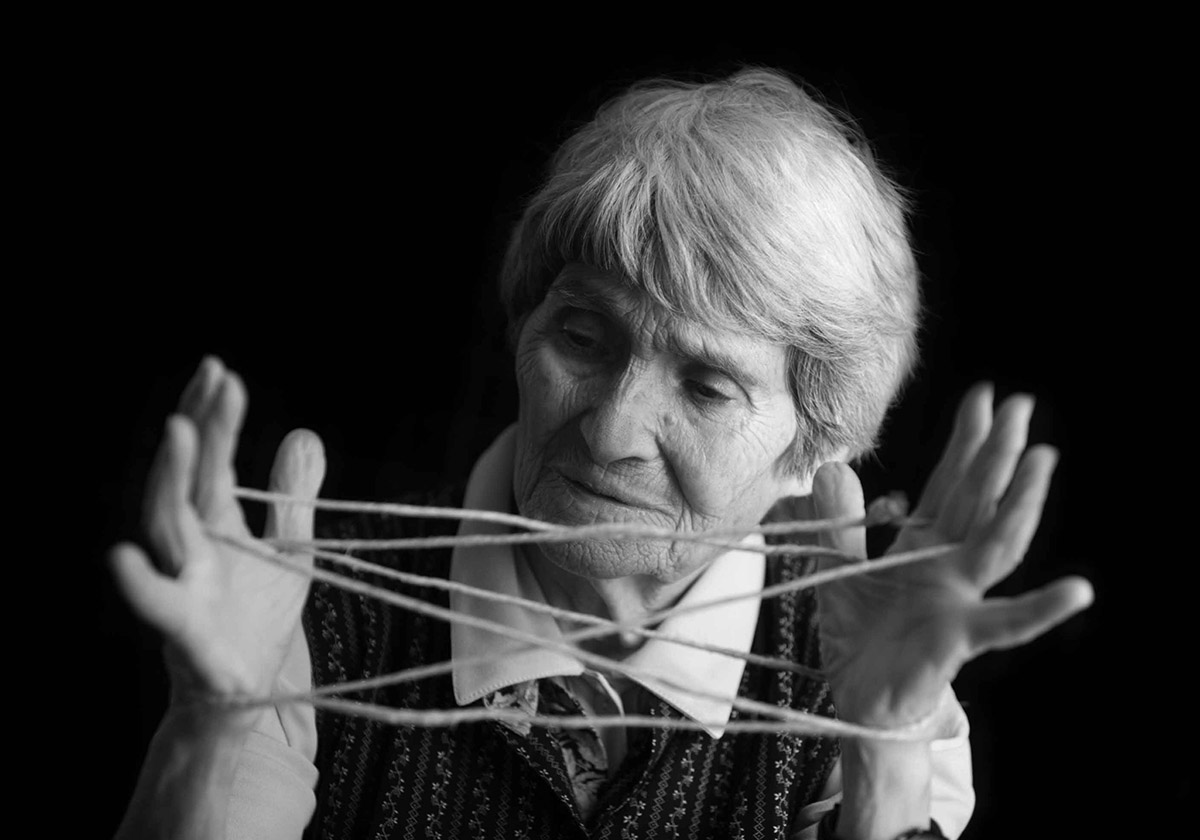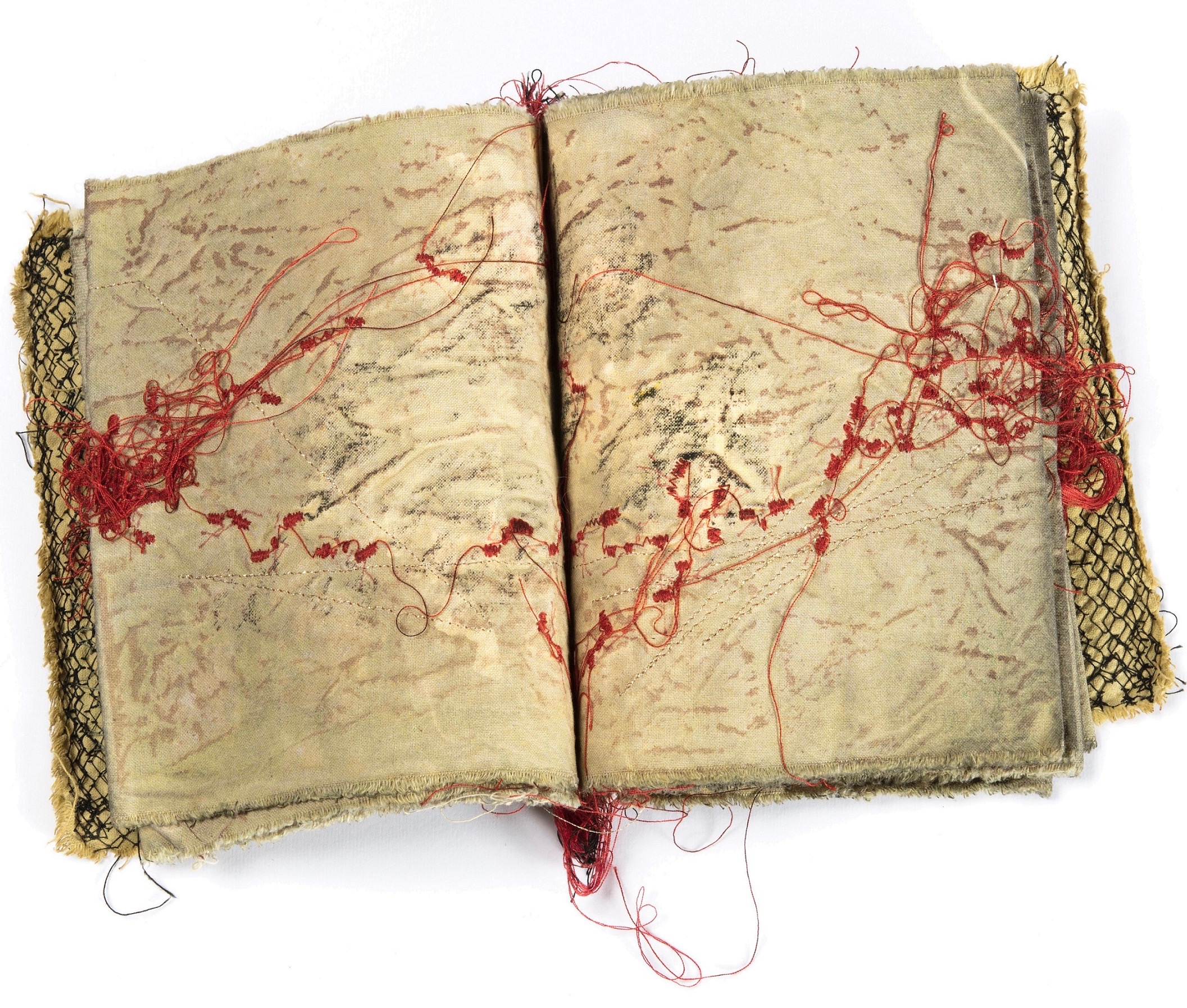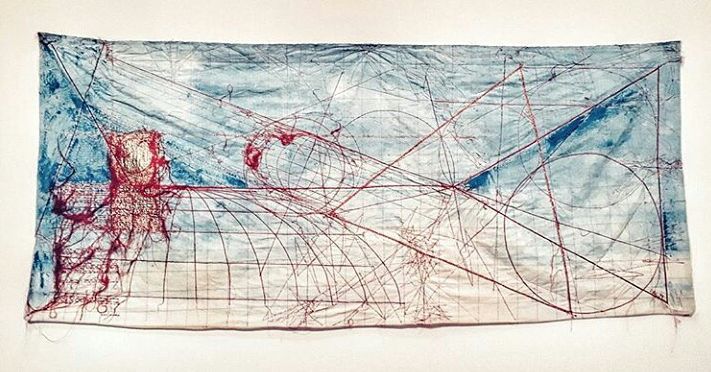
The creator of a simple but also profoundly experimental research, in Maria Lai’s works, the archaic rites of her land are interwoven with the stories and poetry of everyday life, creating a fantastic imagery. In her works, full of stories and symbols, the divine and the human merge, revealing themselves in a simple and universal language. Like the teachings of Francis, Maria Lai’s creations seem to question us about the mystery of existence, guiding us with childlike amazement through the inexhaustible wonders of the world.
The divine and the human in the works of Maria Lai

Maria Lai’s works are like poems made of poor materials.
Love for creation envelops all the work of the artist for whom the work is like an instrument of investigation, the possibility of relating the human and the divine.
Maria Lai was born in 1919 in Ulassai, Sardinia. Of poor health, she was entrusted to the care of her aunt and uncle, with whom she lived until the age of nine, spending her childhood in Cardedu. After a brief stay in Ulassai, she moved to Cagliari, where she enrolled at the Istituto Magistrale in 1932, becoming a pupil of the writer Salvatore Cambosu, with whom she established a deep and lasting friendship.
After a few years spent in Rome, where she had moved in 1939 to attend the Liceo Artistico, following, among others, Marino Mazzacurati’s lessons, in 1943 she moved to Venice, where she enrolled at the Accademia di Belle Arti. Here she had a fundamental meeting with sculptor Arturo Martini, whose teachings would radically influence her later research.
At the end of the war, she returned to Sardinia and met the writer Giuseppe Dessì. She returned to Rome (1954) and at the end of the 1950s received her first important recognitions, while the 1960s were marked by a profound crisis that led her to start experimenting with new techniques and working with different materials.
This led to the creation of Breads and Looms, which were joined by Geographies and Stitched Books from the end of the following decade. During the 1970s he exhibited in various museums and galleries, as well as at the Venice Biennale (1978), and his research began to open up to an environmental dimension.
In 1981, in Ulassai, he realised the famous collective performance Legarsi alla montagna (To bind oneself to the mountain), often remembered as the first example of relational art in Italy. The experimentations started in the 1970s were deepened and developed in the following decades, during which he also intensified his theatrical actions and interventions on the territory. After finally leaving Rome for Cardedu in 1993, he continued to work intensively, signing, among others, the project for the Sabina Oil Museum in Castel Nuovo di Farfa (1999-2001).
She was awarded an Honorary Degree in Literature by the University of Cagliari (2004) for ‘the originality of her vast artistic production, recognised and appreciated in Italy and throughout the world’. In 2006, she inaugurated the Stazione dell’Arte Museum of Contemporary Art in Ulassai, where a large nucleus of her works were collected.
Present with his works in prestigious cultural institutions, he died in Cardedu in 2013.

EMBROIDERY IN THE WORKS OF MARIA LAI
Fundamental in Maria Lai’s works, in her mature production, is the use of thread, embroidery, the art of sewing, which emerges in the Geographies, embroidered cloths on which complex ‘astral maps’ unfold.
The artist said:
“responded to the need for a relationship with the infinite, for a dilation and projection onto the distant”.
Lai’s maps invite us on a journey drawing imaginary spaces, evoking worlds, constellations and astral harmonies. Curved and oblique lines lead our gaze to the elsewhere, an emptiness that is charged with mystery and magic:
“I seek cosmic spaces, skies, spaces that are far away but tactile. The spaces I seek are not so much in a surface as beyond it’.
The artist also entrusts her autobiography, her thoughts, her aphorisms to embroidery, translating them into delicate writings on fabric, where the written language combines with the image, cancelling the distance between poetry and the visual arts. Reflecting on a very ancient practice linked to the female figure, sewing appears to be a place of freedom, capable of translating universal and personal instances.
THE DIVINE AND THE HUMAN IN MARIA LAI
The love for creation is present in all the works of Maria Lai, who conceives art as a tool to get in touch with the absolute. Maria Lai observes life in all its forms, giving voice to its variety: her works are an expression of a pure and unfiltered love for nature and living beings.
“I am a little girl playing, a little goat anxious about precipices. I listen to the silence suspended between heaven and earth’.
The Sardinian artist resolutely pursues her research, revealing the generative power of art, which challenges conventions and celebrates the wonder of creation in simple language.

